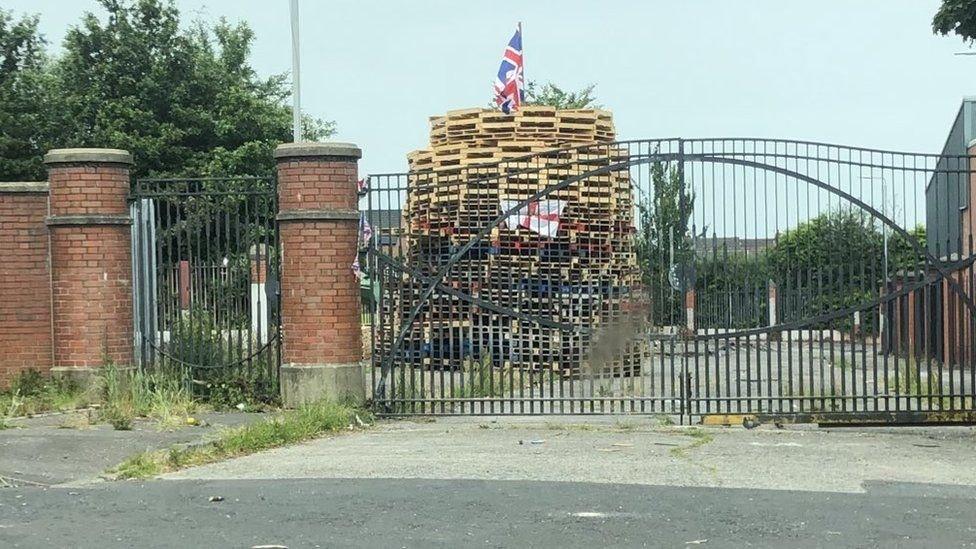The Twelfth: Why are bonfires lit in Northern Ireland?
- Published
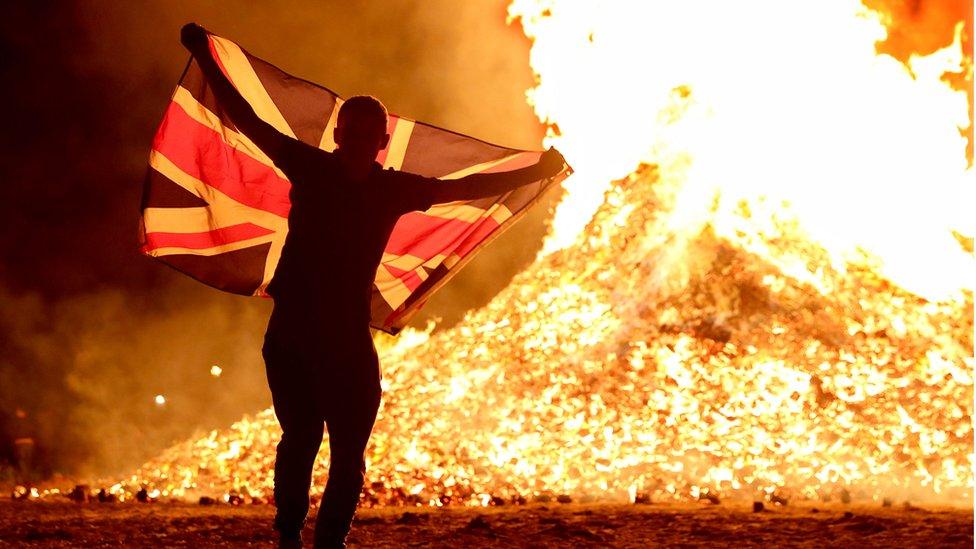
Bonfires are lit in unionist areas on 11 July to kick off the Twelfth celebrations
Bonfires are lit across Northern Ireland in the run up to 12 July - but why?

Why do people light the bonfires?
Bonfires are lit in some unionist areas on 11 July to kick off the Twelfth celebrations.
They mark the Battle of the Boyne in 1690 when the Protestant King William III - also known as King Billy and William of Orange - defeated Catholic King James II.
Bonfires were lit to welcome - and guide - William.

Thousands of people attend bonfires in parts of NI on 11 July, like this one at Pitt Park, east Belfast, in 2022
Historically, a much smaller number of bonfires were lit in mainly nationalist areas on 15 August to mark the Catholic feast of the Assumption, a tradition that was replaced in some places by bonfires to mark the anniversary of the introduction of internment - or detention without trial - on 9 August 1971.
These bonfires are now fewer than before, although some have been the subject of controversy.
What happens on the Twelfth?
Orange Order parades are held in many towns in Northern Ireland throughout the summer but the biggest event in the calendar is 12 July.
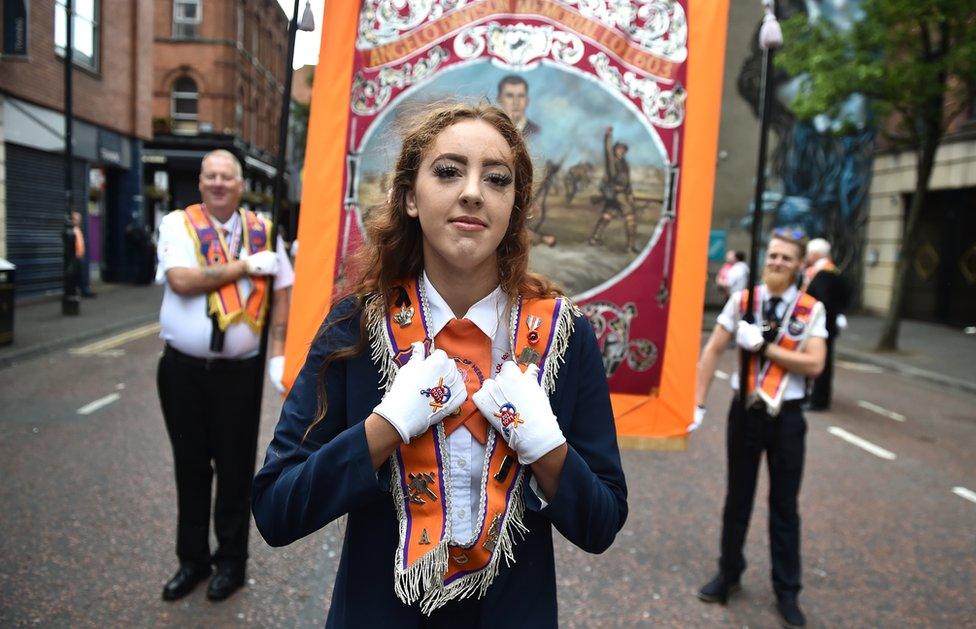
The Twelfth marks the pinnacle of the Orange Order's marching calendar
The Orange Order, which organises parades that attract thousands of people on 12 July, says the events are a way of expressing and promoting the Protestant culture and heritage.
The Twelfth is not just celebrated in Northern Ireland - Orangemen in the Republic of Ireland, New Zealand, Australia and the United States, to name a few, also march.
According to the Order, the core values of "Orangeism" include the promotion of the Protestant faith, maintaining the union between Great Britain and Northern Ireland, carrying out service to the Crown and delivering for the community.
However, many members of the predominantly Catholic nationalist community - and some from Protestant and unionist backgrounds - say they view Orange marches as triumphalist and provocative.
Why are some bonfires so contentious?
Some people object to loyalist bonfires being used as a form of cultural expression, particularly when they involve the burning of flags, effigies and election posters.
In 2022, the Reverend Mervyn Gibson, the grand secretary of the Orange Order, condemned the burning of effigies on bonfires.
It came after effigies of Alliance Party leader Naomi Long and Sinn Féin leaders Michelle O'Neill and Mary Lou McDonald were hung from a bonfire in Carrickfergus.
Images of Queen Elizabeth II, union flags, poppy wreaths and an image of a Police Service of Northern Ireland Land Rover were burned on a nationalist bonfire in the Bogside area of Londonderry.
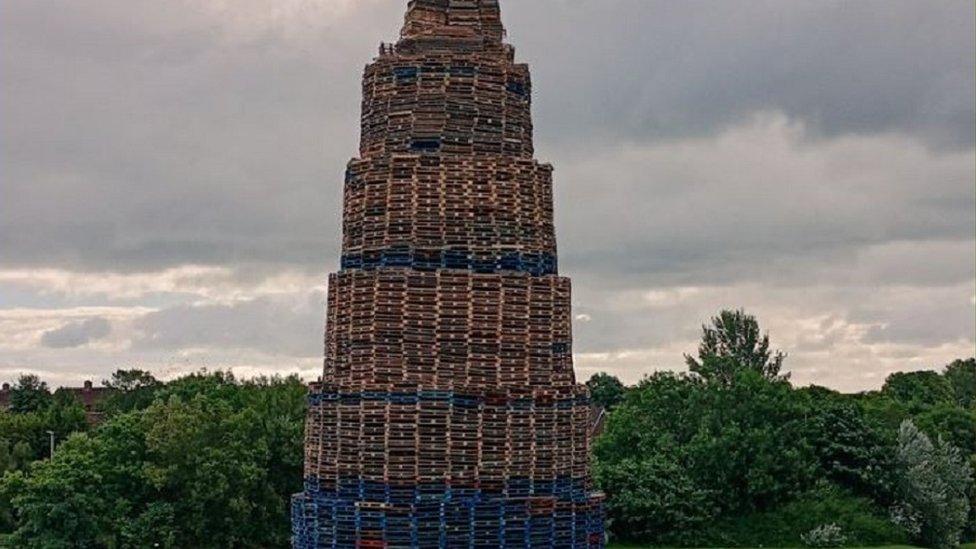
Bonfire builders in Kilcooley estate, in Bangor, have made assurances that "no flags or images of hate" will be on this bonfire
This year, loyalist community activists at a number of bonfires are publicly discouraging the destruction of flags and effigies.
They hope to attract larger, more diverse, crowds "and show that this is about celebrating our culture, not disrespecting anybody else's", as one bonfire builder told the BBC.
However, a bonfire in Moygashel, in County Tyrone, is being investigated as a hate crime by police.
The bonfires can also raise tension if they are located close to nationalist areas.
There is also the issue of safety if bonfires are close to people and properties, as well as their environmental impact.
In 2022, a man died after falling from the top of a bonfire he was helping to build.
What is burnt at a bonfire?
Bonfires are largely constructed from wooden pallets and household waste, but old tyres are sometimes placed in the centre to make the fire burn more effectively, subsequently releasing toxic fumes.
More eco-friendly beacons have been appearing around Northern Ireland in the last few years.

The two-part steel beacon is 5m tall and is pre-filled with a carbon neutral willow wood
These are smaller, pyramid-shaped steel structures, which are pre-filled with a carbon neutral willow wood. They stand on a bed of sand to avoid damage to roads and surfaces, and are designed to be reusable.
Not everyone is a fan of them though.
While beacons are arguably safer and environmentally friendlier, collecting materials for the bonfire and helping build it has been a long-standing and proud tradition among many families and communities.
Have bonfires always been this big?
No. Traditionally bonfires were much smaller but there were a lot more of them.
They were largely built on street corners or waste ground in loyalist areas.
But in recent years, communities have joined together to consolidate their resources to form much larger bonfires, often due to a lack of space.
Eleventh night bonfires getting ready in Northern Ireland
Another reason for the increased size is a friendly rivalry between communities bidding to build the biggest bonfire.
The Craigyhill bonfire in Larne, County Antrim, was the tallest last year, standing at a height of about 202ft (62m), and it is even bigger this year, according to its builders.
Who pays for them?
Communities collect for bonfires months in advance - both financially and physically.
Most fundraise for local charities or causes and organise family fun days in the run-up to the bonfire being lit.
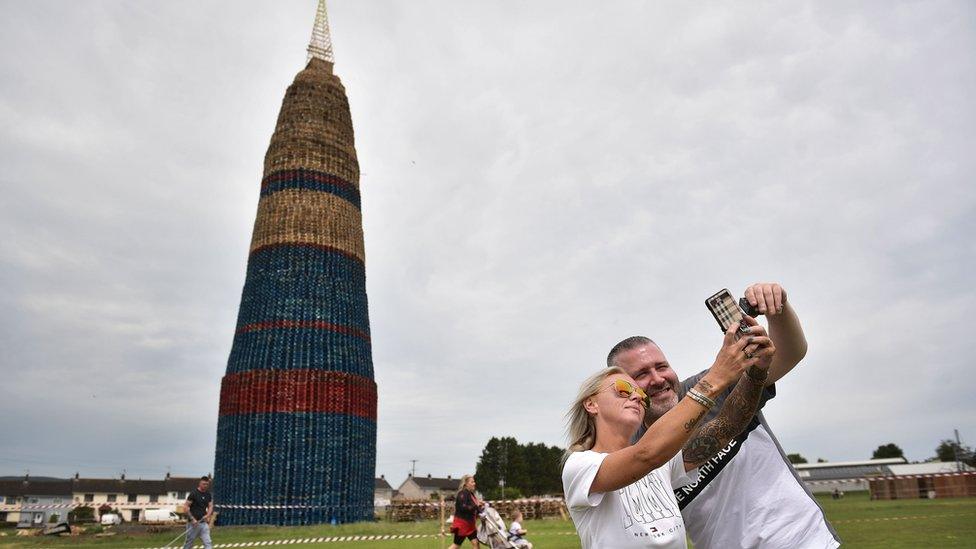
While a number are self-funded, some avail of council and government funding through cultural expression grants.
They come with stipulations such as not displaying paramilitary symbols or burning flags, effigies or tyres.
Why are some bonfires lit early?
Bonfires are usually lit at midnight on 11 July - or sometimes earlier to allow more members of the community to attend and limit the noise and disturbance in the early hours of the morning.
Smaller children's bonfires and events, which often include bouncy castles, local bands, games and music, run earlier in the day near most bonfires.
Related topics
- Published6 July 2023

- Published15 July 2022
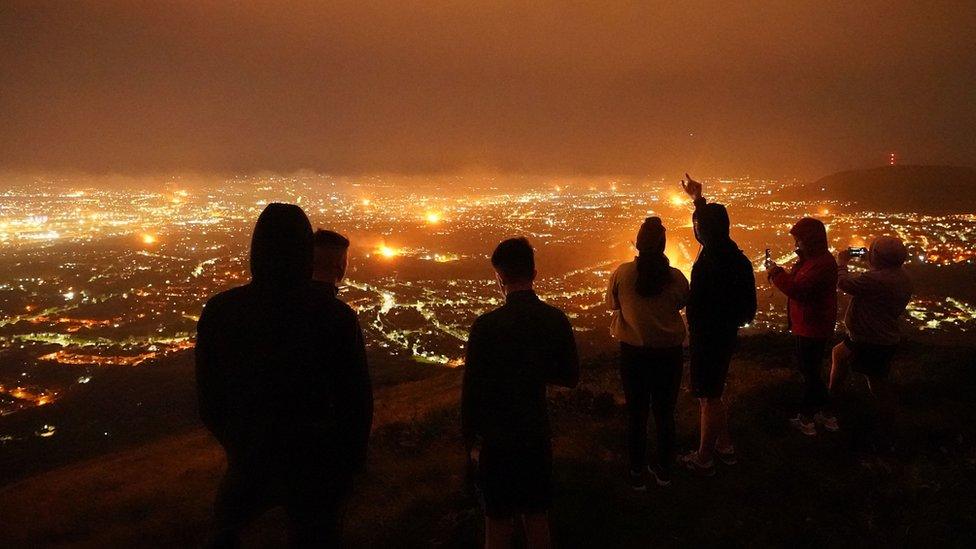
- Published12 July 2022
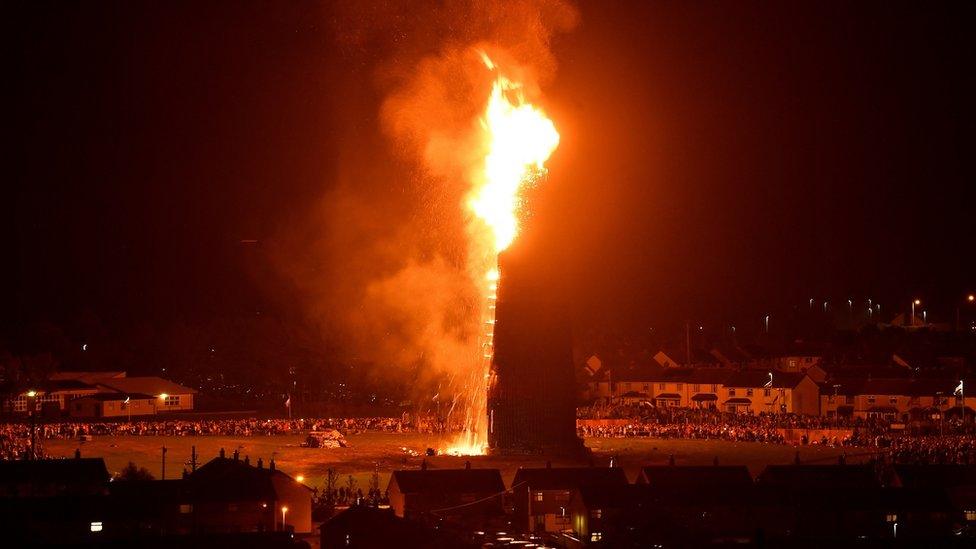
- Published7 July 2021
